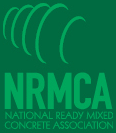FHWA Issues Tech Brief on Reactivity of SCMs
Print this Article | Send to Colleague
With supply challenges on traditional supplementary cementitious materials (SCM), new materials are entering the marketplace. Even fly ash sources, now referred to as coal ash, are changing because of efforts to harvest material from legacy disposal sites and the ability to use bottom ash from coal burning facilities. These materials need to be determined if they improve the properties of concrete.
ASTM standards are evolving to ensure that materials that are non-reactive or inert are determined so that if they do not meet the specification they cannot be used in concrete. Toward that end. FHWA has published a TechNote: Pub FHWA-HRT-25-050 Reactivity of Supplementary Cementitious Materials.
A variety of different test methods can measure or indicate reactivity of SCMs. Emphasis is placed on developing and using novel and emerging SCMs in concrete. However, testing is needed to understand how each novel material reacts with the other constituents in a concrete mixture. Reactivity testing provides
understanding about whether a material is pozzolanic, hydraulic or not reactive enough to be considered an SCM.
The purpose of this TechNote is to support materials suppliers, producers and infrastructure owners during materials acceptance and quality control efforts while deciding which reactivity test can be performed to characterize an SCM. In doing so, this TechNote offers background on reactivity and reactivity testing, and synthesizes reactivity test methods that can be used to characterize novel materials that replace cement within concrete. Advantages, disadvantages and challenges are discussed for the most commonly mentioned approaches for measuring reactivity.
The FHWA publication can be downloaded here.

